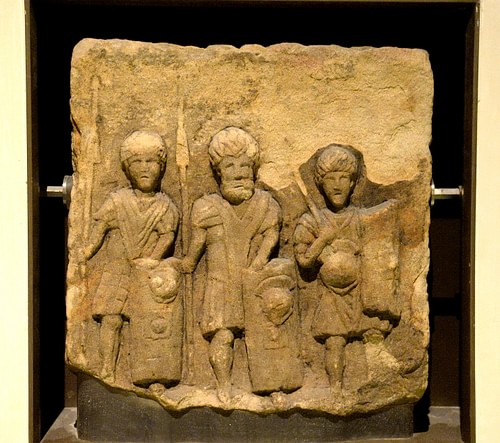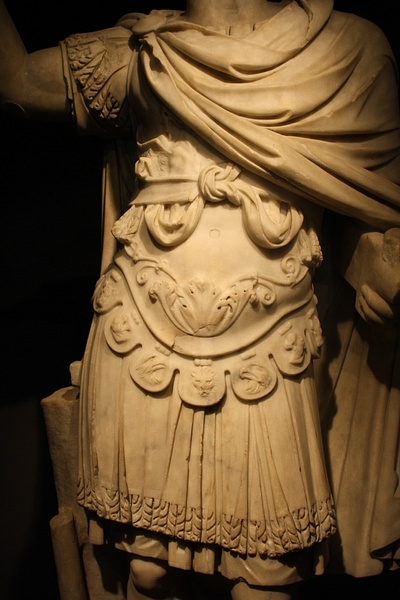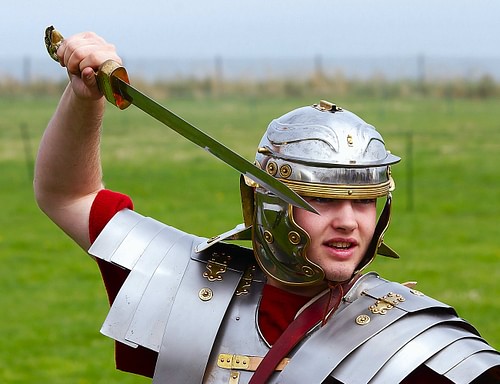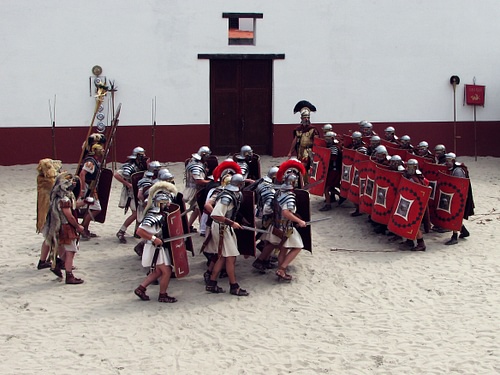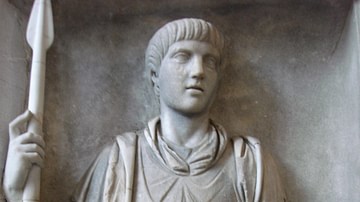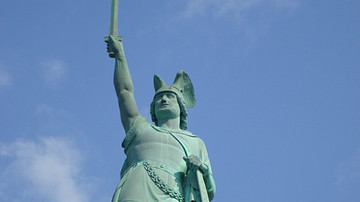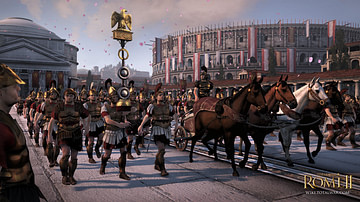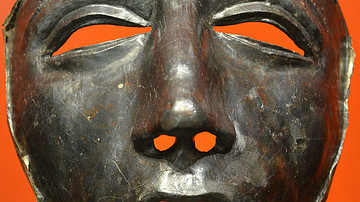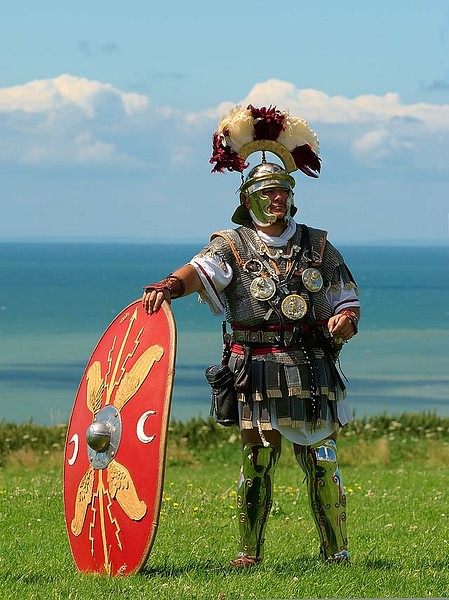
The Centurion (centurio in Latin) was an officer in the Roman army whose experience and valour were a crucial factor in maintaining order on the battlefield and ensuring Rome's military successes spanned over centuries. A centurion commanded a unit of around 100 legionaries but was also responsible for assigning duties, dishing out punishments, and performing various administrative duties.
A centurion was responsible for a great number of other duties which ranged from distributing camp passwords to the escort of prisoners. Centurions could also rise to higher administrative positions within the empire, but the name centurion would forever be associated with the grizzled veteran who, emblazoned with decorations, led by courageous example on the battlefield.
Origins & Evolution
According to Roman tradition, the existence of centurion rank went right back to the first armies of Rome in the mid-8th century BCE which, led by the legendary Romulus, had 3,000 men and 30 centurions, each commanding a 100-man infantry group known as a manipulus, which also had its own standard or signa. According to Dionysius of Halicarnassus, the centurion rank had Etruscan origins and was incorporated into the Roman army by the Etruscan king of Rome Servius Tullius (r. c. 579-534 BCE), the rank being given to the bravest soldiers in battle.
Over time the organization of army units evolved, and by the late 6th century BCE, the army had two legions, each composed of 3,000 heavy hoplite infantry, 1,200 light infantry, and 300 cavalrymen. In the 4th century BCE, further reforms reshaped the manipuli into more flexible military units deployed in three lines of troops (acies triplex), so that the number of infantry commanded by a centurion was reduced to 30. Therefore, a 4th century BCE legion (legio) had 150 centurions.
Polybius describes the army units of the mid-2nd century BCE where there were 4,000 men to a legion that now included light skirmishers. The legion in this period was divided into 30 manipuli with a total of 60 centuriae units each commanded by a centurion who appointed his own junior officer (optio). Two centuriae made up a maniple and the most experienced centurion took the right wing. Of all these centurions, the most senior was the primus pilus, who also had a seat on the military council. Following Marius' reforms in 107-104 BCE, the centurion given command of the right centuria of the maniple was known as the prior centurio, whilst he on the left wing was called the posterior. Centurions usually took position in the front rank of their troops during battle, which resulted in their disproportionate fatality rate in battle.
By the 1st century BCE, the army was re-arranged into cohorts (cohors), each consisting of six 100-man centuriae. Each legion had ten cohorts so that the number of centurions in a legion remained 60. Their titles of prior and posterior were also maintained, as was their seniority based on which type of troops they commanded - (from the least senior) hastati, principes, and pili (younger, experienced, veteran troops, respectively) and the seniority of their centuriae within a particular cohort.
Entry Requirements
Traditionally centurions came from the lower plebeian class, but by the 1st century BCE, the rank also became associated with members of the higher equestrian class. The post was open to non-Latins and centurions could be appointed through election, appointment by the Roman Senate or promotion from the ranks, especially for those who displayed great bravery or leadership qualities in battle but, in the Imperial Period, also as a direct commission without prior military experience. There were even cases of direct appointment by the emperor himself.
As the Roman army became ever more professional, so too the requirements to become a centurion became stricter and, at least for the most senior centurion positions, a certain ability in administrative affairs became necessary, even the support of an influential patron. On the other hand, and although most centurions maintained that rank throughout their career, it now became possible for senior centurions to go even higher in the hierarchy and become tribunes, prefects, and even members of the Senate. Emperor Maximinus Thrax (r. 235-238 CE), a centurion under Caracalla (r. 198-217 CE), showed that in turbulent times even the highest position of all was possible, and Vespasian's (r. 69-79 CE) father and grandfather had also served as centurions.
Uniform & Armour
Centurions often wore a helmet (galea) with a distinctive transverse crest (crista transversa), which was typically silver with a died hair or feather plume, typically ostrich or peacock feathers. In the Imperial Period, the crest could also be front to back on the helmet. Early centurion helmets could also have a faceguard or mask sculpted into the form of, for example, a horned Silenus. In the later Roman Empire, centurion helmets carried insignia in silver. His armour included greaves (ocreae), which usually had engraved decoration, and a bronze cuirass (thorax stadios) chest plate, either belly-shaped or sculpted to replicate muscles or incorporating scaled armour (lorica squamata). Alternatively, he could wear a leather version or lighter stiffened linen cuirass (linothorax). Chest (and back) armour could also have shoulder guards (humeralia) and protective hanging strips (pteryges) for the upper arms and groin and even a neck protector at the back.
In the 1st century CE, a short-sleeved ringmail armour vest was also common amongst centurions. A tunic was worn under the armour, which for centurions was either white, off-white, or various shades of red. A cloak (sagulum) could be worn, which was typically blue or green with a yellow border and tied at the front using a brooch or fibula. A centurion also carried a 90 cm vine-stick cudgel (vitis latina) as a measure of his rank. The typical shield in the Roman Republic was either the circular clipeus or the rectangular scutum. In the Imperial Period, oval shields could be carried, but generally the centurions seem to have used the same shield type as the troops under their command. On top of all this, centurions also wore the awards they had received for valour, which could include heavy necklaces (torques), bracelets (armillae), and medallions (phalerae), which were worn attached to a leather chest harness.
Weapons
In the early Republic, weaponry for centurions varied, often depending on their rank and personal preference. They could carry a spear (hasta) and sword (ensis), the latter being worn on the left side, which was in contrast to the legionaries who wore theirs on the right hip. Different swords were used, but the most favoured was the straight double-edged xiphos or the curved machaira. From the 2nd century BCE, the gladius hispaniensis became the sword of choice. With a length around 65 cm, it usually had a trilobate or hemispherical pommel and was carried in a silver scabbard hung either on a balteus strap hanging over the shoulder and across the chest or from a belt (cingulum). A dagger (pugio) around 25 cm long could also be worn, often hanging horizontally from the belt.
Duties
Reporting to the tribunes, centurions were responsible for training legionaries, assigning duties, and maintaining discipline amongst the ranks. They themselves were expected to display valour in battle and stand resolute when things were not going so well, and if they did not they could face execution. Accordingly, most centurions commanded respect from the troops in their charge through leading by example. Centurions were, though, also noted for their sometimes brutal physical discipline. When in camp they supervised the building of the camp fortifications, the digging of trenches, roll calls, and the issuing of passwords to enter camp. They could also be responsible for escorting prisoners, erecting dedicatory monuments, and involved in logistics such as procuring a supply of provisions when on campaign.
Other roles of centurions included being ultimately responsible for the safety of the legion's standards, and they were often selected for special missions such as raids and reconnaissance in enemy-held territory. By the 1st century CE, centurions were regularly given the job of commanding special police and intelligence units (frumentarii), sub-units of auxiliary forces (auxilia), which were composed of non-citizen soldiers, and units of allied armies (numeri). Experienced centurions might also become aides to provincial governors or train troops as exercitores. Senior centurions also participated in war councils to decide strategies and were involved in peace talks with the enemy. In the Imperial Period, centurions also served in the emperor's personal bodyguard, the Praetorian guard, and after 16 years of service could join the evocati who were given various urban administrative roles that included such lucrative positions as town commandants.
In the late Republic, centurions were paid five times more than a normal legionary. Centurions also received a higher bonus from war booty, as, for example, in 64 BCE when Pompey gave each centurion a bonus of 1,000 drachmas whilst legionaries got only 50 drachmas each. By the 1st century CE, centurions were getting 15 times the pay of a legionary; senior centurions considerably more. Centurions were also notorious for bolstering their pay with bribes, as it was they who assigned duties and recommended promotions for the men below them.
Famous Centurions
One famous centurion was the legendary Lucius Siccius Dentatus, known as the 'Roman Achilles', who, in the 5th century BCE, participated in a staggering 120 battles and at least eight single combat duels. He also found time to single-handedly recapture his legion's standards, and he boasted no fewer than 45 battle scars. Spurius Ligustinus enjoyed a 22-year career in the 2nd century BCE, during which he won 34 separate awards for courage and ability on the battlefield. The centurion mentioned most often in Julius Caesar's accounts of the Gallic Wars is one P. Sextius Baculus, also known as 'the Staff', who once saved Caesar's life on the battlefield. Such are the names of just a few of the long line of battle-scarred veterans who, over the centuries, made the rank of centurion respected and feared by both Roman and enemy troops alike.
